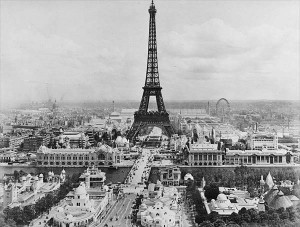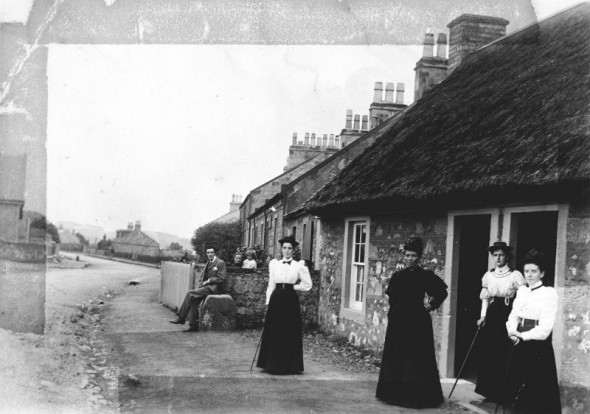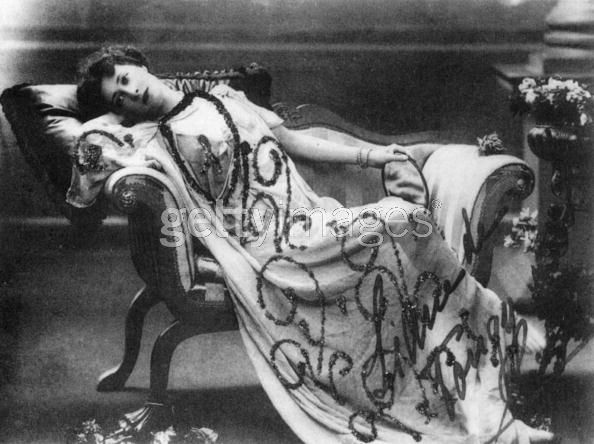 A major development of the nineteenth century was the emergence of world’s fairs, all of which served to entertain visitors and impress them with the technological and cultural advances of Western nations and their colonies which increased exponentially–and dazzlingly–after the 1851 Great Exhibition hosted by England under the auspices of the Prince Consort. By the 1900 world’s fair, which was held in Paris, there had been eleven other expositions, held in such places as Vienna, Philadelphia, Sydney, New Orleans, Barcelona, and Chicago, which introduced a variety of inventions and cultures to awed visitors.
A major development of the nineteenth century was the emergence of world’s fairs, all of which served to entertain visitors and impress them with the technological and cultural advances of Western nations and their colonies which increased exponentially–and dazzlingly–after the 1851 Great Exhibition hosted by England under the auspices of the Prince Consort. By the 1900 world’s fair, which was held in Paris, there had been eleven other expositions, held in such places as Vienna, Philadelphia, Sydney, New Orleans, Barcelona, and Chicago, which introduced a variety of inventions and cultures to awed visitors.
 Though there were three more expositions of significance by the dawn of WWI (St Louis in 1904, Seattle in 1909, and San Francisco in 1915), the one held in 1900 was unique in that it was the first and last fair to bridge the gap between the nineteenth and twentieth centuries. This was also the pinnacle of imperialism, and the “nadir of race relations in America.” After witnessing the successful campaign for the inclusion of African-Americans in the Chicago World’s Fair of 1893, African-Americans viewed the Paris Exhibition as another avenue to promote the progress of their people in the thirty-five years since the end of slavery. The year before the fair, W.E.B. Du Bois, a noted sociologist and activist for African-Americans, began to collect material for the display, and focused on “creating charts, maps, and graphs recording the growth of population, economic power, and literacy among African Americans in Georgia.” In conjunction with Daniel A.P. Murray, assistant to the Librarian of Congress, Du Bois was able to assemble a large collection of written works, which included a bibliography of 1400 titles, 200 books, and many of the 150 periodicals published by black Americans.
Though there were three more expositions of significance by the dawn of WWI (St Louis in 1904, Seattle in 1909, and San Francisco in 1915), the one held in 1900 was unique in that it was the first and last fair to bridge the gap between the nineteenth and twentieth centuries. This was also the pinnacle of imperialism, and the “nadir of race relations in America.” After witnessing the successful campaign for the inclusion of African-Americans in the Chicago World’s Fair of 1893, African-Americans viewed the Paris Exhibition as another avenue to promote the progress of their people in the thirty-five years since the end of slavery. The year before the fair, W.E.B. Du Bois, a noted sociologist and activist for African-Americans, began to collect material for the display, and focused on “creating charts, maps, and graphs recording the growth of population, economic power, and literacy among African Americans in Georgia.” In conjunction with Daniel A.P. Murray, assistant to the Librarian of Congress, Du Bois was able to assemble a large collection of written works, which included a bibliography of 1400 titles, 200 books, and many of the 150 periodicals published by black Americans.
Du Bois stated that the objective of the exhibit was quadruple, and by displaying it he hoped to illustrate “the History of the American Negro, the Present condition of the Negro, the Education of the Negro, and Literature of the Negro.” he project was backed with a $15,000 budget appropriated from the American government and amounted to numerous artifacts, including “musical compositions, books by African American authors, and the poetry of Paul Laurence Dunbar, their award-winning display of photographs, books, models, maps, patents, and plans from several black universities, including Atlanta, Fisk, Howard, Hampton, and Tuskegee, showed the world African Americans “studying, examining, and thinking of their own progress, and prospect.”
One highlight of the exhibit utilized nine model displays to depict the progress of Negroes from slavery to the present day. The models began with the homeless freedman and end[ed] with the modern brick schoolhouse and its teachers. Finally, to illustrate the increase in population of the race and to demonstrate other contributions, there were charts showing population growth, the decline in illiteracy and a record of the more than 350 patents granted to black men since 1834. Du Bois stated, concerning the exhibit “we have thus, it may be seen, an honest, straightforward exhibit of a small nation of people, picturing their life and development without apology or gloss, and above all made by themselves.” As a result of its great success, the Negro Exhibit was awarded with seventeen medals during its time on display at the Paris Exposition. Specifically, it received “two grand prizes, four gold medals, seven silver medals, two bronze medals and two honorable mentions” in the various categories of appraisal.
Further Reading:
About Du Bois and the Paris Exposition
The 1900 Paris Exposition
The Exhibit of American Negroes
W.E.B. Du Bois and the 1900 Paris Exhibition
Africans, Darkies and Negroes: Black Faces at the Pan American Exposition of 1901, Buffalo, New York
A small nation of people: W.E.B. Du Bois and African American portraits of progress from the Library of Congress with essays by David Levering Lewis and Deborah Willis.
The Exhibit Online





Universal Exhibitions very often included villages from Developing Countries, to be viewed as a bit of a side show alley with exotic food and dancing girls. So that made it doubly important to get the Progress of the American Negro exhibition exactly right in Paris in 1900. It could have so easily slipped into being a story of quaint exotica.
The judges must have loved the Exhibit of American Negroes. I have never heard of any one pavilion winning 17 medals at a World Fair before, or since. Bloody brilliant, I say.
Indeed! What was particularly delicious about the acclaim was that there were “exotic” displays erected at the same time. I would love to read contemporary reactions to those who stumbled upon this display–the US sources I’ve read were either contemptuous, blase, or silent.
This was most interesting and pleasing reading. I absolute love the photograph and portraits. I could totally connect with there faces.
I will have to send this article to my family.
Thanks,
Lady Estelle
Thank you Lady Estelle! It is so wonderful to find these images because it solidifies the presence of blacks in society. It can be lonely as a lover of the Victorian era to find no one who looks like you.
That is so true. I want to learn as much as I can about the great part blacks have contributed to history. All I learned in school and books written by blacks was about the toil of slavery and the fight to be free.. It is a new awakening to learn of just hard working , middle class, educated blacks.